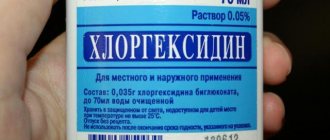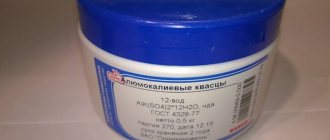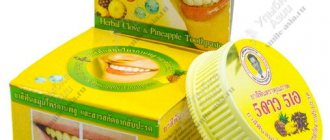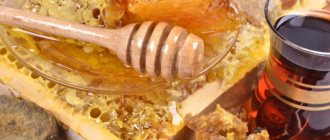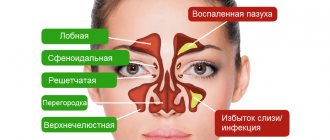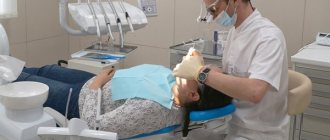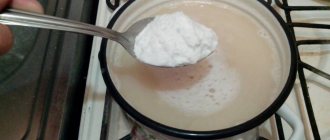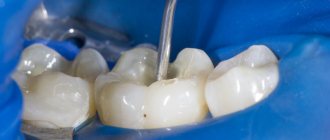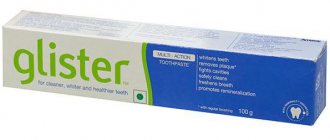What is Chlorhexidine and its action
Chlorhexidine is a very popular drug known to many people, since its scope of application is quite wide. Its main purpose is to remove pathogenic microorganisms of various categories.
Most often, Chlorhexidine is used to treat all kinds of wounds and abrasions, as well as to disinfect the doctor’s hands before examination or surgical procedures.
Can Chlorhexidine be used to treat open wounds? If previously brilliant green and iodine were most often used to treat abrasions, today Chlorhexidine is in first place among many pharmaceutical products, gradually replacing even hydrogen peroxide. The drug has no contraindications, does not cause adverse reactions, and is used not only for the treatment of injuries, but also in the treatment of certain diseases.
Chlorhexidine for wound treatment perfectly destroys microorganisms of various groups , including gram-positive and gram-negative bacteria, Trichomonas vaginalis, protozoa, as well as most viruses, including the herpes virus. The drug is powerless only against Koch's bacillus, which is the causative agent of tuberculosis.
At the same time, an important advantage of the product is the absence of a resistant reaction to it in microorganisms, that is, the bacteria being destroyed do not get used to it, do not mutate, do not adapt, but simply die. Therefore, the effectiveness of the drug remains throughout the entire treatment, regardless of how often treatments are carried out.
Medical Internet conferences
Chlorhexidine is an antiseptic that does not lead to bacterioresistance
Pogosyan M.A.
Scientific supervisor: assistant of the Department of Pediatric Dentistry and Orthodontics, Ph.D., Kazakova L.N.
GBOU VPO Saratov State Medical University named after. IN AND. Razumovsky Ministry of Health of the Russian Federation
Department of Pediatric Dentistry and Orthodontics
An analysis of Russian and foreign medical literature has shown that for more than 60 years of active use of chlorhexidine in the clinic, there are no reports of microflora resistance to it.
Chlorhexidine is an amphipathic molecule with hydrophilic and hydrophobic groups and is a cation at physiological pH. The molecule consists of two symmetrical chlorophenol rings (4-chlorophenyl) and two biguanide groups united in the center by a hydrophobic hexamethylene chain, being a symmetrical molecule - 1,6-bi-4-chlorophenyldiguanidohexane [1, 2]. Typically, chlorhexidine is used in the form of salts, mainly biacetate, bigluconate or dihydrochloride [3,4,5]. Bigluconate is most soluble in water and alcohols [5]. In addition, this form has the additional advantage that the active components with a positive ionic charge are released at physiological pH values. Chlorhexidine is practically not absorbed from the gastrointestinal tract. After accidental ingestion, the drug is not detectable in the blood after 12 hours. Due to its cationic nature, chlorhexidine binds well to the skin and mucous membranes. Chlorhexidine is not inactivated by blood and plasma proteins, is distributed locally when applied cutaneously and is practically not involved in metabolism. Chlorhexidine is widely used in medicine as an antiseptic and disinfectant for surfaces and instruments. For diseases in surgery, dentistry, gynecology, urology, dermatovenereology, otolaryngology, it is used locally. It is the main antiseptic for treating the surgical field, surgeon's hands, and medical staff's hands in postoperative care for patients in ENT departments and in cosmetology. Chlorhexidine is characterized by a pronounced antibacterial effect and substance compared to other antiseptics used to treat the oral cavity. [6]. At a dental appointment, chlorhexidine is offered in concentrations of 0.05%; 2% in the form of solutions and Diplen-Denta X, containing chlorhexidine digluconate 0.01-0.03 mg per 1 sq. cm.
What concentration of chlorhexidine has the best properties, which is more effective in the treatment of caries of primary and permanent teeth in children?
Purpose of the work: to compare the effectiveness of chlorhexidine bigluconate at a concentration of 0.05%; 2% in relation to microflora taken from the carious cavity at different depths.
Materials and methods : we conducted a study of the quality of the microflora of 20 carious cavities: 10 in baby teeth and 10 in permanent teeth. Infected dentin of the carious cavity was taken with a sterile bur, bacteriological examination was carried out according to all the rules of clinical microbiology, to isolate aerobic and optionally anaerobic microorganisms. During primary culture, multiple streptococci and staphylococci were isolated from carious cavities and in milk and permanent teeth. Biochemical identification of pure cultures of streptococci, enterococci, and staphylococci was not performed. To identify the sensitivity of microflora to chlorhexidine, the crops on a Petri dish were treated with various concentrations of an antiseptic, and after 1 and 3 days the possible growth was analyzed. In both cases: when using 0.05% and 2% chlorhexidine, no growth of cultures was detected.
Analysis of the results obtained confirms the continued high activity of chlorhexidine against pathogens present in the carious cavity and their lack of resistance. The same final result obtained during the study using different concentrations of the antiseptic allows us to experimentally substantiate the feasibility of using chlorhexidine 0.05% in pediatric dentistry.
Indications for use
Indications for use of the drug include:
- Carrying out disinfection of wounds of various types, including those on mucous membranes.
- Use as part of complex therapy in the treatment of various fungal infections.
- Preventive treatments to prevent STDs.
- Treatment of oral diseases such as gingivitis, periodontitis and stomatitis.
When treating wounds, cuts, abrasions and other injuries, the solution is applied directly to the surface of the skin and injury without the use of gauze pads or cotton swabs (discs). To carry out the treatment, simply pour the composition onto the damage after preliminary cleaning.
It is important to remember that when treating skin and soft tissue injuries, bleeding should be stopped before filling the wound with Chlorhexidine, since the drug does not have a hemostatic effect.
To disinfect injured areas, a solution of concentration from 0.05 to 0.1% is used. The same solution (in the same concentration) can be used to carefully treat the surface of burns, including chemical and thermal ones. In this case, the solution will work not only as an antiseptic, but also as a means of cooling the surface, as well as washing away chemicals from the skin and the site of damage that led to the burn.
Chlorhexidine is often used for dressings instead of hydrogen peroxide. Wounds, including purulent ones, are washed with the solution, the hands of medical personnel are treated, and bandages that have dried to the wounds are watered for painless and careful removal.
Local treatment of purulent wounds
Local treatment is one of the most ancient methods of treating purulent wounds. Currently, the main method of treating purulent wounds, incl. purulent wounds in diabetes mellitus, is radical surgical treatment followed by plastic closure of the wound defect. However, in some cases, surgical intervention does not always manage to adequately remove all non-viable tissue. In this situation, to prepare a suppurating wound for skin grafting or its spontaneous healing, local therapy plays an important role.
The main principle in the conservative treatment of purulent wounds is the targeted use of dressings with a differentiated effect on the wound process, taking into account its phase and characteristics of the course.
The course of the first phase of the wound process is heterogeneous and can manifest itself as limited dry necrosis, scab, or a profusely exuding wound. The objectives of treatment in the first phase are: suppression of infection in the wound, activation of the processes of rejection of necrotic masses, sorption and evacuation of wound discharge.
In the first phase of the wound process, drugs from the group of antiseptics (iodophors, prontosan, lavasept) and hydrophilic ointments (levomekol, dioxykol) are most often used as local treatment for purulent wounds. In the treatment of highly exuding purulent wounds, it is advisable to use biologically active dressings from the group of draining sorbents (diotevin, anilodiothevin). In case of weak wound exudation with the formation of dry necrosis, it is possible to combine drainage sorbents with hydrogel dressings (Hydrosorb, Suprasorb G, APOLLO-PAK) (Fig. 1).
Fig. 1 Treatment of a patient with a burn wound of the leg using hydrogel dressings
If there are areas of wet necrosis in the wound, calcium alginates (Sorbalgon, Suprasorb A, Algisayt) are used as local therapy to quickly reject dead tissue (Fig. 2).
Fig. 2 Local treatment of a purulent wound in a patient with diabetic foot
carried out with a sorbalgon bandage
After cleansing the wound of necrosis, the appearance of granulations, eliminating perifocal inflammation and tissue infiltration, it is necessary to solve the following problems: suppressing infection in a purulent wound, creating optimal conditions for the growth of granulation tissue and epithelization, stimulating reparative processes, preparing for plastic closure of the wound defect.
Rice. 3 Structure of modern wound coverings
In the second and third phases of the wound process, treatment of purulent wounds continues with ointments on a water-soluble and hydrophilic emulsion basis (Vinilin, Actovegin, Solcoseryl, sea buckthorn oil), stimulating wound coverings (Collahit) (Fig. 4), hydrogels (Hydrosorb, APPOLO PAK, Suprasorb G) and hydrocalloids (Hydrocoll, Suprasorb N). It is carried out until complete epithelization of the wound or skin grafting.
Fig.4. Collachite wound covering
Thus, local treatment of purulent wounds with differentiated use of modern dressings, taking into account the phase and nature of the wound process, allows you to quickly prepare the wound for skin grafting, and if it is impossible to perform it in the shortest possible time, achieve complete epithelization of the wound defect.
dr-anikin.ru
Wound treatment with Chlorhexidine
The main purpose of the drug is precisely the antiseptic treatment of various surfaces, not only healthy skin, but also wounds of almost any origin.
The product belongs to the group of special germicidal antibiotics, and therefore Chlorhexidine is capable of not only stopping the growth of harmful microorganisms, preventing their reproduction, but also completely destroying pathogenic elements.
If we compare the product with other drugs of the antiseptic group, we can note that Chlorhexidine has no color or any odor, which means that this antiseptic is not toxic, does not leave marks on the skin, and does not cause pain to the patient when treating wounds, which is also significant advantages.
The drug does not have a negative effect on the healing process and does not lead to the formation of pronounced scars.
Chlorhexidine is completely safe , it does not cause allergic reactions or irritation of damaged tissues, and therefore is very often used to treat fresh skin lesions and disinfect them, along with regular hydrogen peroxide.
To treat fresh scratches, abrasions, various wounds, including postoperative wounds, in order to prevent the development of infection, a solution of the drug is used in a concentration of 0.05 - 0.1%. A solution of the same concentration can also be used to treat burns, as well as wounds in the oral cavity after tooth extraction.
A one-time treatment of the wound immediately after receiving it does not exclude the possibility of secondary infection, therefore, after washing, a sterile bandage should be applied, and if it is small, it can be sealed with a bactericidal plaster.
To treat wounds, it is recommended to simply pour a small amount of the drug onto the surface, wait a little, and then carefully blot the residue with a sterile napkin. Before carrying out such treatment, it is recommended to thoroughly wash the wound and the skin around it with water and laundry soap to remove any existing contaminants.
The drug in a concentration of 0.1 - 0.2% is often used for disinfection when performing various medical procedures , for example, when removing splinters, opening calluses and small abscesses, boils, when striking wounds that have dried to the surface of bandages, bandages, and plaster. A solution of this concentration is also used to treat the hands of medical personnel.
Infections caused by antibiotic-resistant microflora represent an ever-growing threat in both hospital and community settings. Nosocomial infections lead to a decrease in the effectiveness of therapy, an increase in the duration of hospitalization and an increase in mortality.
Chlorhexidine bigluconate was developed in Great Britain in 1950. It is the first internationally recognized antiseptic for skin and wounds. One of the advantages of chlorhexidine, in addition to its pronounced antimicrobial effect, is its ability to bind to various biological substrates while maintaining its antibacterial activity, and then be slowly released, which leads to the preservation of effective concentrations of the drug. To date, there are no reports of resistance to chlorhexidine, despite more than 60 years of active use of the drug in the clinic. Chlorhexidine gluconate remains important in the prevention of nosocomial infections.
Widespread use of antiseptic methods for the prevention and treatment of infections followed the publication of Joseph Lister's The Antiseptic Principle in Surgical Practice in 1867. At the same time, “Lister’s antiseptics” met ardent opponents, whose main argument was the toxicity of the antiseptic they used (carbolic acid). Despite the availability of numerous antiseptics, the question of the safety and effectiveness of this group of drugs remains constantly relevant. The “longevity” of chlorhexidine and the prospects for its further use as one of the most powerful antiseptics widely used in clinical practice is a pressing issue for clinicians.
A cationic detergent (detergent), later named chlorhexidine, was synthesized during the development of antimalarial drugs in 1947. This compound has bactericidal antimicrobial activity, especially against gram-positive microorganisms. Of the 10,040 compounds, the first to enter the market was chlorhexidine gluconate, registered in 1954 by Imperial Chemical Industries Co.LTD (UK) as “Gibitan” - the first internationally recognized antiseptic for the treatment of wound surfaces and skin. In 1957, only 3 years after entering the market, the indications for its use were expanded to include not only skin treatment, but also use in ophthalmology, urology, gynecology and otorhinolaryngology. In 1959, chlorhexidine began to be used to control bacterial plaque, leading to its widespread use in dentistry. Currently, in clinical practice, chlorhexidine is preferred not only when treating the skin (hands, surgical field), but also as an oral antiseptic, including for the prevention of nosocomial infection. The most commonly used concentrations are 0.2% and 0.12% solutions. In addition to its effect on plaque and gum condition (gingivitis), chlorhexidine is effective in the prevention and treatment of caries, secondary infections after dental procedures or implant placement. Chlorhexidine reduces the bacterial load and the risk of bacteremia after dental procedures. It is also used in the treatment of recurrent atrophic stomatitis and stomatitis associated with the installation of dentures, primarily in groups of patients with orthodontic appliances and immune disorders. One of the main advantages of chlorhexidine, in addition to its powerful antimicrobial effect, is its ability to retain its antimicrobial activity when bound to various substrates. At the same time, it is released slowly while maintaining an effective concentration. This property is known as substantiveness. Chlorhexidine is not susceptible to blood, pus, or saliva. Chlorhexidine is pharmaceutically incompatible with soap and detergents (for example, those containing lauryl sulfate), alkalis and other anionic compounds (colloids, gum arabic, carboxymethylcellulose), and iodine. Compatible with ethyl alcohol, benzalkonium chloride (contained in contraceptives for local use Pharmatex and Benatex). Ethanol enhances the effectiveness of the drug. The bactericidal effect increases with increasing temperature. At temperatures above 100°C, the drug partially decomposes. Used in a neutral environment; at pH 5-8 the difference in activity is small; at pH above 8 it precipitates. The use of hard water reduces bactericidal properties. Compatible with drugs containing a cationic group (benzalkonium chloride, cetrimonium bromide).
The unique combination of properties of chlorhexidine also determines the variety of dosage forms.
Chlorhexidine is available in the following forms: • 20% concentrated solution – intended for dilution before use, used in medical institutions; • 0.05% solution in plastic and glass bottles of 70 and 100 ml - used without dilution, including at home; • Vaginal suppositories (suppositories) “Heksikon” containing 0.016 g of chlorhexidine, 1 or 10 suppositories in a package; • Vaginal suppositories (suppositories) “Heksikon D” containing 0.008 g of chlorhexidine – intended for children, 10 suppositories per package; • Gel containing 0.5% chlorhexidine. Chlorhexidine is included in the following preparations: • Solutions for mouth rinsing for dental diseases and manipulations (tooth extraction, opening of abscesses, professional cleaning, etc.) – Elgidium, Amident, Eludril; • Gels for gums, intended for the treatment of dental diseases and pain relief in the oral cavity (for example, when getting used to dentures), one of the components of which is chlorhexidine - Dicloran Denta, Elugel, Metrohex, Parodium, Elgifluor, Dentamet, Metrogyl Denta; • Elgidium toothpaste; • Solutions with other antiseptics – Baktoderm (with benzalkonium chloride), Chlorhexidine alcohol spray – for the treatment of skin infections, Citeal (with hexamidine and chlorocresol) – for topical use in gynecology, dermatology; • Ointments Bepanten plus and Depantol (with panthenol - wound healing effect), Bemilon (with betamethasone - anti-inflammatory effect); • Vaginal suppositories Depantol (with panthenol) – used in gynecology after surgical interventions; • Chlorhexidine in combination with lidocaine for local anesthetic action in the Lidocaine-Asept spray and Instillagel and Kategel gels with lidocaine; • Lozenges for sore throat, stomatitis and other diseases of the oropharynx and oral cavity – Hexoral tabs, Anti-Angin formula, Sebidin.
Use of the drug during pregnancy and lactation
Pregnancy, as well as breastfeeding a baby, is not a contraindication to the use of the drug.
Using the product to treat wounds is acceptable, but with caution. The drug has no toxicity and does not have a systemic effect. When treating damaged areas of skin, only a small part of the product can penetrate the bloodstream without creating a threat to the developing baby.
The drug does not cause any adverse reactions, so theoretically its use for external treatment of skin lesions cannot cause any harm to the unborn baby. Rather, on the contrary, an infection that penetrates a wound can enter the bloodstream through damaged blood vessels, and through it to other organs. The development of an infection anywhere inside the body will lead to an inflammatory process and the occurrence of diseases that will affect the development of the baby.
Therefore, the use of the drug for treating wounds during the period of bearing and feeding a baby is more than justified, but caution in use will not hurt.
Treatment of wounds in children
Children of different ages very often receive all kinds of injuries and wounds. Kids are very actively exploring a new world for them, and in the process of getting to know it, they do not do without abrasions.
Children learn to rollerblade and bicycle, play outdoor games, climb trees, swing on swings, play various sports, communicate with animals, and quite often they get various injuries that require antibacterial treatment in order to prevent the penetration of harmful microorganisms and spread infections.
Since Chlorhexidine does not have a toxic effect on the body, does not cause adverse reactions or allergic manifestations, it can also be used to treat wounds, abrasions and other skin lesions even in very young children.
How to replace Chlorhexidine when treating wounds
The most famous analogue of Chlorhexidine can be called Miramistin solution, which has the same properties and actions, has the same high efficiency and an almost similar list of indications for use.
Analogues of the drug:
- Miramistin is only a functional analogue, precisely because of its similar action, and although the main substance in these drugs is different, they can completely replace each other. The use of Miramistin, unlike Chlorhexidine, is not contraindicated for people suffering from any types of dermatitis.
- Akhdez-3000 , which has a pronounced fungicidal effect, suppressing harmful microflora in literally 30 seconds. After application to the skin or surface of wounds, the product remains effective for an hour if the injury remains open, and for at least 3 hours if a sterile bandage is applied or medical gloves are worn (when treating hands).
- Citeal is another analogue containing Chlorhexidine, along with Hexamidine and Chlorocresol. The drug belongs to the group of foaming antiseptic solutions used to treat hands and skin surfaces, as well as mucous membranes and all kinds of damage.
Chlorhexidine
Chlorhexidine
(Latin
chlorhexidinum
, English
chlorhexidine
) is a drug widely used for antiseptics and disinfection. In surgical practice, treatment of wound infections, prevention of sexually transmitted diseases, in dentistry, in the treatment of otorhinolaryngological diseases as an antimicrobial agent. Chlorhexidine bigluconate is one of the most active local antiseptics. It is well tolerated and has a rapid and strong bactericidal effect on gram-positive and gram-negative bacteria, while it has weak antifungal activity and does not have a destructive effect on viruses and spores. The drug remains on the skin of the hands and the surgical field and continues to have a bactericidal effect.
Chlorhexidine bigluconate and has a stronger bactericidal effect on gram-positive bacteria, especially sensitive strains of Staphylococcus aureus
, which are most often the causative agents of infectious skin diseases.
Chlorhexidine is less active against gram-negative pathogens. Some Pseudomonas
and
Proteus
are resistant to chlorhexidine. The use of creams that create a semi-permeable film that does not interfere with transepidermal moisture loss helps restore the natural barrier function of the skin. Chlorhexidine has a broader antiseptic effect compared to antibiotics; it forms a film on the surface of the wound, providing a long-lasting effect (Abelevich M.M.).
Chlorhexidine is mildly toxic to living cells. Maintains antimicrobial effect when impregnated into a dressing. Due to long-term persistent bacteriostatic activity, chlorhexidine prevents the proliferation of microorganisms for at least 6 hours after use of the drug. The activity of chlorhexidine is reduced in the presence of organic material such as pus or blood, so washing infected wounds and changing the dressing 2-3 times a day is recommended.
Chlorhexidine is a chemical compound
Dichlorinated biguanide derivative. The chemical name is 1,6-Di-(para-chlorophenyl-guanido)-hexane. The empirical formula of chlorhexidine is C22H30Cl2N10. Molecular weight 505.5 g/mol.
Chlorhexidine in ATC
Chlorhexidine is the international nonproprietary name (INN) of the drug. In ATC, chlorhexidine is included in a number of different groups, each of which has its own code, in particular:
- "A01 Dental preparations", "A01AB Antimicrobial preparations for local treatment of diseases of the oral cavity", code A01AB03
- “B05 Plasma replacement and perfusion solutions”, “B05C Irrigation solutions”, code B05CA02
- “D08 Antiseptics and disinfectants”, “D08AC Biguanides and amidines”:
- code "D08AC02 Chlorhexidine"
- code “D08AC52 Chlorhexidine in combination with other drugs”
According to the pharmacological index, chlorhexidine belongs to the group “Antiseptics and disinfectants”.
Microorganisms against which chlorhexidine is active or inactive
Chlorhexidine is active, in particular, against:
- gram-positive bacteria: Staphylococcus spp., Streptococcus spp., Clostridium spp
. - gram-negative bacteria: Neisseria gonorrhoeae, Gardnerella vaginalis, Treponema spp., Bacteroides fragilis, Chlamidia spp.
- prostists: Tricyomonas spp.
Bacteria of the genus Ralstonia
.
Indications for use of chlorhexidine
Chlorhexidine, as a medicinal or disinfectant, is most often used in the form of chlorhexidine bigluconate. Chlorhexidine is used for:
- hand hygiene:
- surgeons
- medical personnel
- food industry workers
- catering workers
Chlorhexidine in oral hygiene products
The main hygienic carrier of chlorhexidine in dentistry is traditionally mouth rinses.
Their formula makes it possible to provide the necessary therapeutic concentrations, and the inclusion of stabilizing additives in the composition significantly increases the stability and bioavailability of the drug. Numerous clinical studies have confirmed the high effectiveness of rinses with chlorhexidine as an anti-inflammatory and anti-plaque oral hygiene product. The severity and nature (bactericidal or bacteriostatic) of the antimicrobial effect of chlorhexidine have a clear dose-dependent effect. Chlorhexidine bigluconate has the widest spectrum of antimicrobial activity in a high therapeutic concentration of at least 0.2%. The introduction of chlorhexidine into toothpastes has long been problematic. The reason is the incompatibility of anions (both inorganic and organic) with chlorhexidine, which has cationic properties. Abrasives traditionally used in the manufacture of toothpastes interact with chlorhexidine, leading to its rapid inactivation during storage. In recent years, abrasive system formulas have been proposed that allow this drug to be incorporated into toothpastes. However, to date, the clinical effectiveness of toothpastes with chlorhexidine has been extremely insufficiently studied (Solovyova A.M.).
| Chlorhexidine mouthwash |
There are studies that substantiate that patients with GERD with frequent reflux of acidic contents into the oral cavity are recommended to use toothpastes containing chlorhexidine and calcium, which increases the pH of saliva, which leads to neutralization of the acidic environment and enhancing the antibacterial effect of chlorhexidine (Polikanova E.I. .).
In addition to limitations in the choice of hygiene products, topical use of chlorhexidine in a personal oral hygiene program may be limited by the following side effects:
- superficial staining of teeth and other surfaces in the oral cavity
- increased formation of tartar
- temporary reversible change in taste sensations
- serious allergic reactions (rare); See FDA Alert 2/2/2017.
The use of chlorhexidine for rinsing the oral cavity in pregnant, breastfeeding and children
FDA Category of Risk to the Fetus is B for chlorhexidine mouthwash in pregnant women (animal studies have not shown any risk of adverse effects on the fetus; there have been no adequate studies in pregnant women).
There have been no adequate studies on whether chlorhexidine is excreted into human milk. In this regard, rinsing the mouth with chlorhexidine by nursing mothers is allowed only under the special supervision of a specialist.
There have been no studies regarding the safety and effectiveness of chlorhexidine mouthwash therapy in children and adolescents. Therefore, its use by children and adolescents under 18 years of age is not recommended in this capacity.
Professional medical publications addressing the role of chlorhexidine in healthcare
- Polikanova E.I. Clinical and laboratory study of soft dental tissues in patients suffering from gastroesophageal reflux disease. Abstract of dissertation. Ph.D., 14.00.21 – dentistry, 14.00.05 – ext. diseases. MGMSU, Moscow, 2005.
The use of chlorhexidine in the disinfection of medical products
Chlorhexidine gluconate (alcohol solution), according to MU 287-113 “Guidelines for disinfection, pre-sterilization cleaning and sterilization of medical products,” can be used as a disinfectant for the disinfection of medical products made of glass, metals, plastics, rubber, including endoscopes, instruments for them for viral and bacterial (except tuberculosis) infections.
The concentration of the solution is 0.5%, the exposure time is 30 minutes for viral infections and 15 minutes for bacterial infections. Alcohol solutions of chlorhexidine are used to disinfect hands and instruments. Surgical instruments and endoscopes are disinfected with a 0.5% alcohol solution by immersing in the solution for 30 minutes, with the exception of the optical part, which is disinfected by wiping with a solution of the same concentration. After this, instruments and equipment are washed twice in distilled water.
FDA Warning for Rare but Serious Allergic Reactions
The US Food and Drug Administration, in its communiqué dated February 2, 2017, warns that rare but serious allergic reactions have been reported with the use of commonly used topical antiseptics containing chlorhexidine digluconate.
Although the number of reports of serious allergic reactions to these drugs is not large, it is trending to increase. The FDA requires manufacturers of over-the-counter (OTC) antiseptic products containing chlorhexidine digluconate to add a warning about this possible risk to the labeling of these drugs. Prescription mouthwashes and oral chips used to treat gum disease that contain chlorhexidine already have a warning on the labels. Consumers if they experience symptoms of a serious allergic reaction should stop using products containing chlorhexidine digluconate and immediately call a doctor or call 911. These reactions may occur within minutes of exposure to the drug. Symptoms include: difficulty breathing, shortness of breath; swelling of the face; urticaria, which can progress quickly; severe rash; shock, which occurs due to insufficient blood flow and is a life-threatening condition.
Health care professionals, before recommending or prescribing a chlorhexidine-containing product, should always ask patients if they have ever had an allergic reaction to any antiseptic and advise them to contact their doctor immediately if they experience any symptoms of an allergic reaction with their use. If such reactions are documented or suspected, the healthcare professional should consider using alternative antiseptics such as povidone-iodine, alcohols, benzalkonium chloride, benzethonium chloride, or chloroxylenol.
general information
Medicines containing the active ingredient chlorhexidine are (have been) registered in Russia: Amident, Hexicon, Hexicon D, Hibiscrub, Kategel S, Plivasept, Plivasept P, Chlorhexidine, Chlorhexidine bigluconate, Chlorhexidine Gifrer, Chlorhexidine S, Chlorhexidine-Ferein, Chlorhexidine bigluconate, Citeal .
Chlorhexidine has contraindications, side effects and application features; consultation with a specialist is necessary.
Back to section
